At the north of the Malta island, one can find the municipality of Saint Paul’s Bay, including several connected villages, one after the other: Xemcija in the innermost part of the bay, and further out on the south side: St. Paul’s Bay, Buġibba and at the far end; Cape Qawra. This is the most densely populated area in Malta after the capital Valletta. Around 30,000 souls live here in winter, and the double during summer.
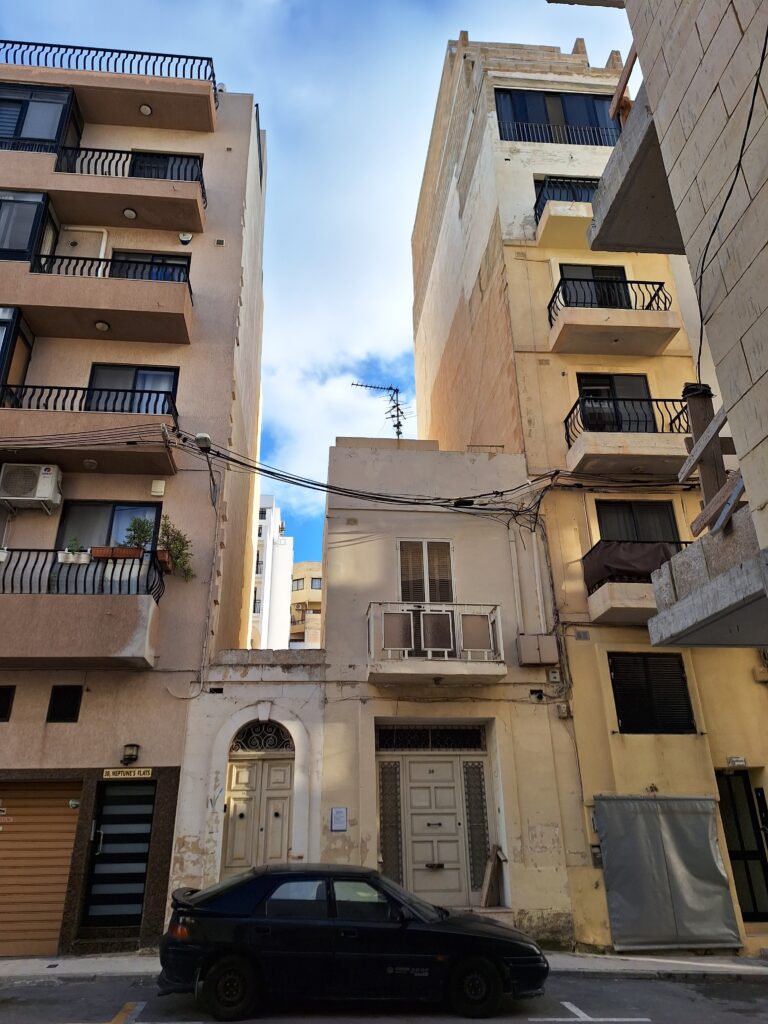
The area is described as follows in our guidebook:
‘This large and beautiful bay, which was a quiet fishing area until the 20th century, is sadly now surrounded by ugly modern apartments and mass-tourism hotels. Buġibba and Qawra on the southern side are particularly unattractive‘.
Here, from the 60s, one large ugly concrete block hotel after another popped up, hotels that are now being demolished to be replaced by new, better ones. Where do you bathe in such a place?
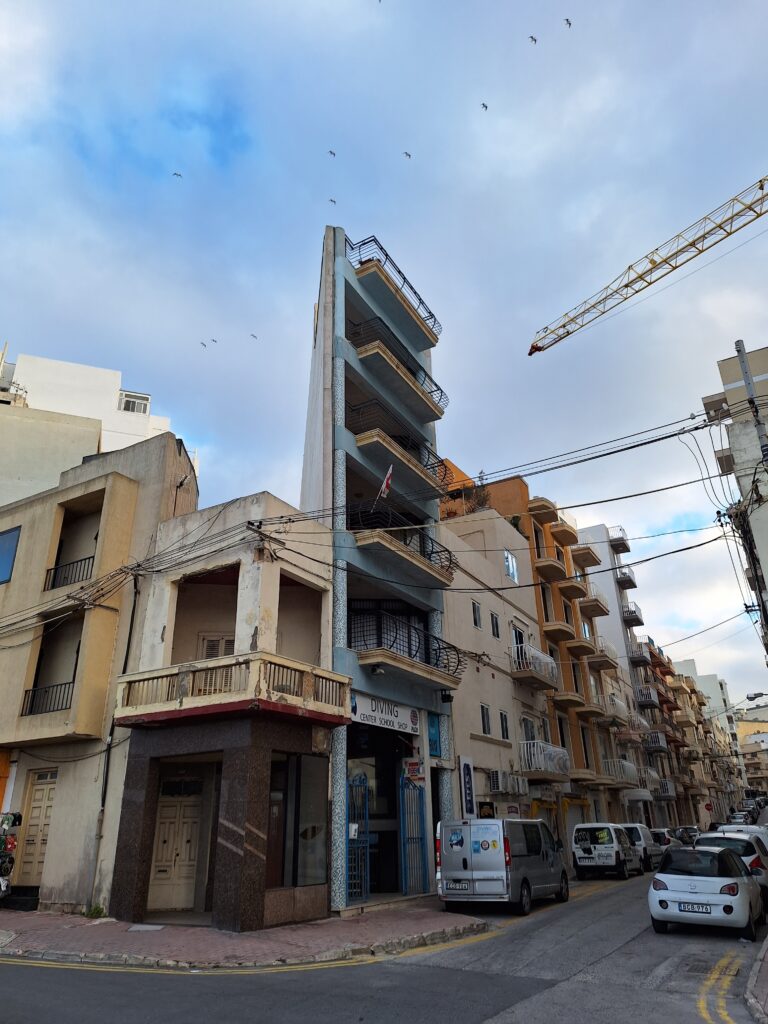
The beach in the innermost part of the bay, by Xemcija, is not allowed for swimming, and the town of St. Paul’s Bay has no swimming facilities, so there the choice was basically easy.
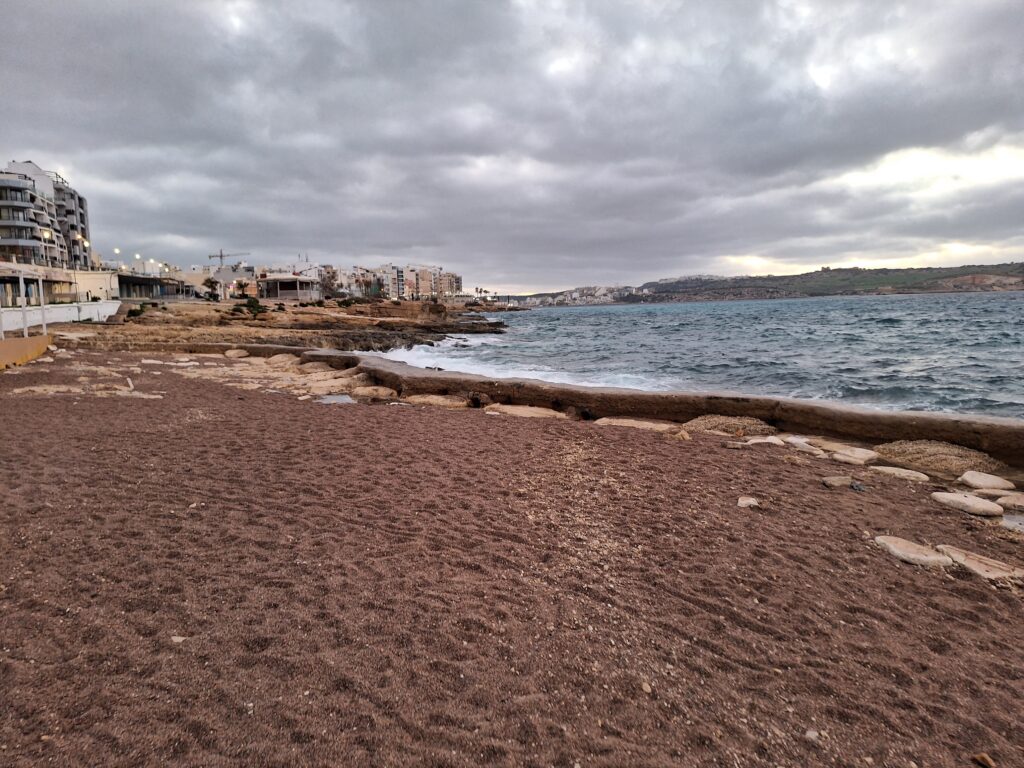
Much of the coast in Malta consists of pointed cliffs that are not easy to swim from, but occasionally there are beaches, and we found a small one in Buġibba, not far from the apartment.
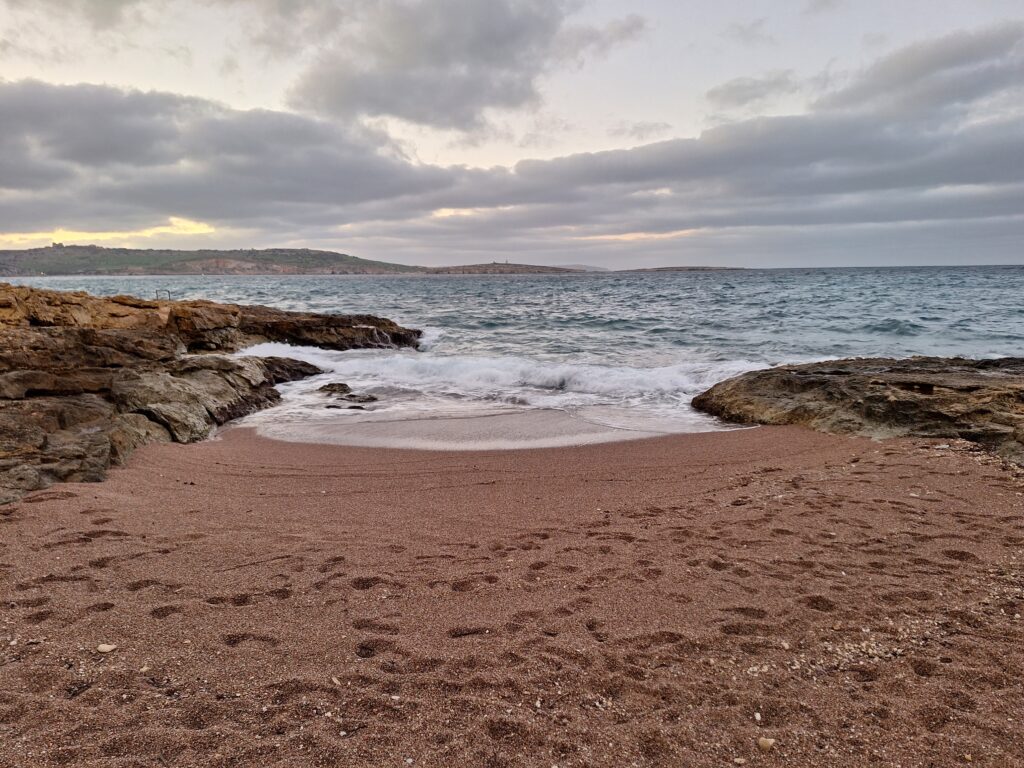
Tobatheornottobathe had for a long time accumulated points through a house exchange website, and decided to use some of them to travel south in the winter of 2024. When you get an offer of free accommodation for 3 weeks, you can’t fuss about such details as bad reviews in the guidebook, can you? We wanted to escape from an icy Trondheim to a warmer climate, in the hope of getting our backs in order. The both of us struggled with back pain this winter, and what can possibly be better for your back than swimming?
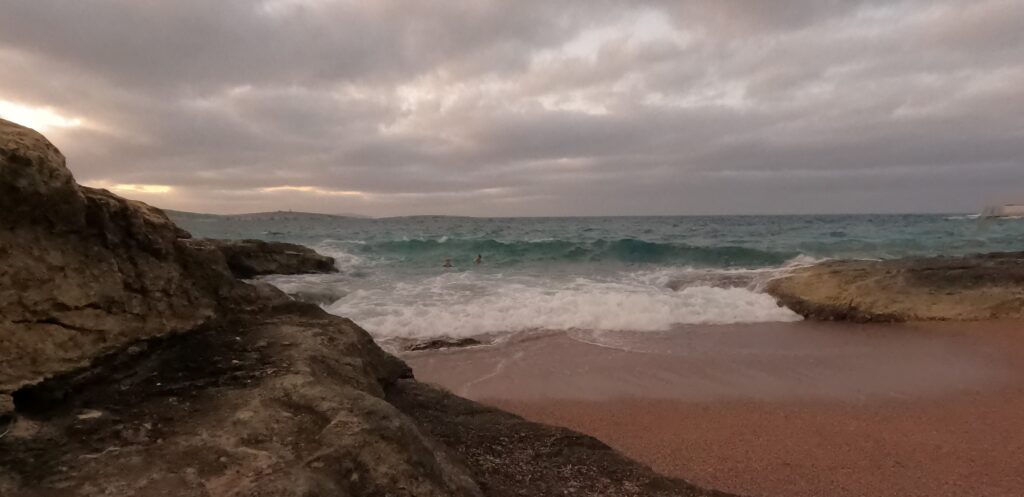
Saint Paul’s Bay has been inhabited since the Stone Age, and traces of people have been found 6,000 years back.
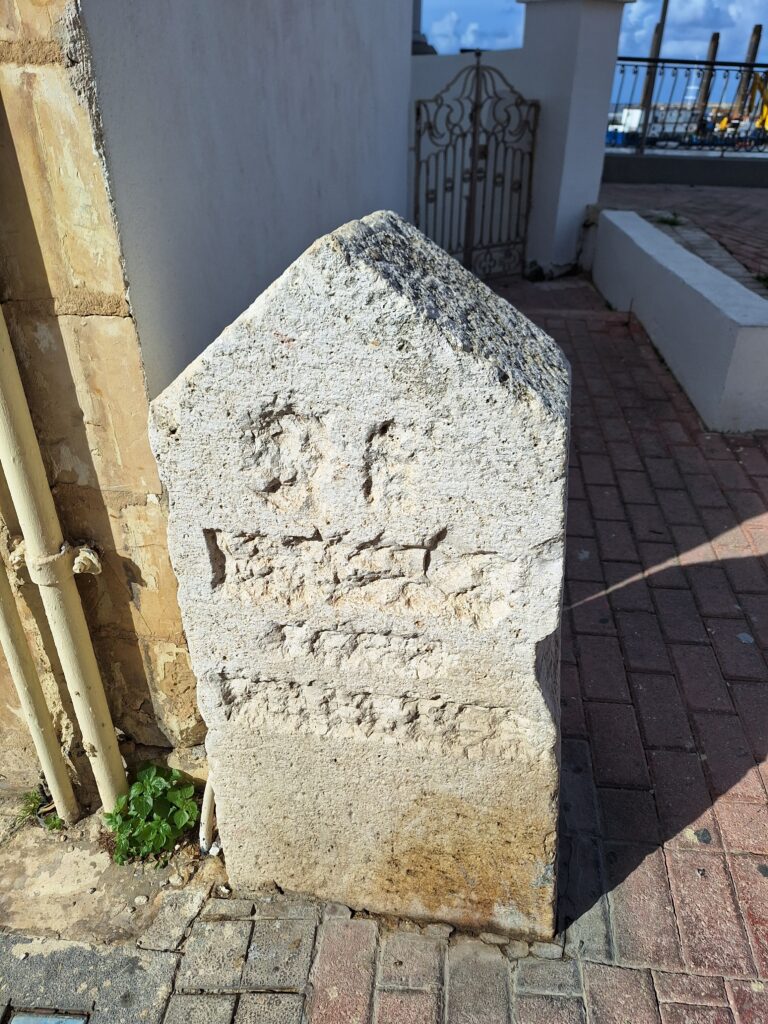
Here you find remains of temples several thousand years old, baths from Roman times and forts built by the Order of Saint John. Between the new houses, that is.
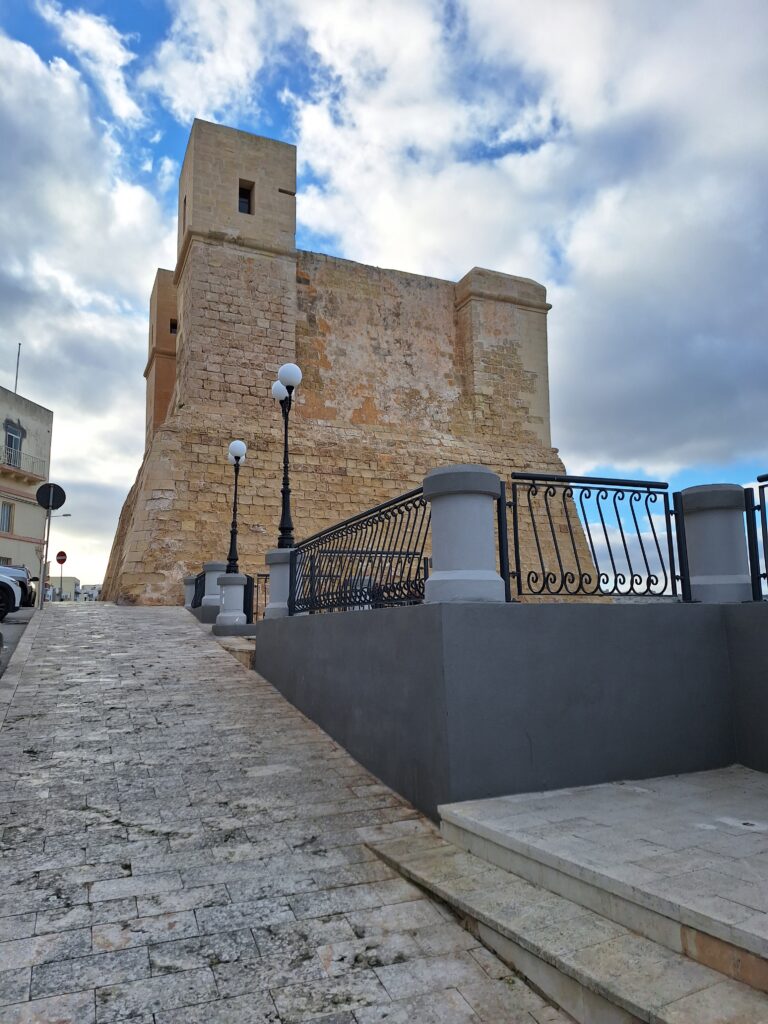
Living in South Trøndelag, Norway, we know Dolmsundet by the Hitra island well, and we are big fans of ‘Knutsen and Ludvigsen‘, so we have to admit that we were very surprised when we saw ‘Dolmen‘ as a place name, and also Dolmen Hotel on the map. What on earth could that be?
There was no connection. ‘Dolmen‘ in ‘Trønder dialect‘ means ‘less wind‘, i.e. shallow waters, and it fits well with the place Dolmsundet, which is a rather narrow channel. A dolmen from prehistoric times, however, is a tomb consisting of a horizontal, flat stone lying on top of two vertical, flat stones. A bit like a small (stone) henge, but a burial place and not a temple.
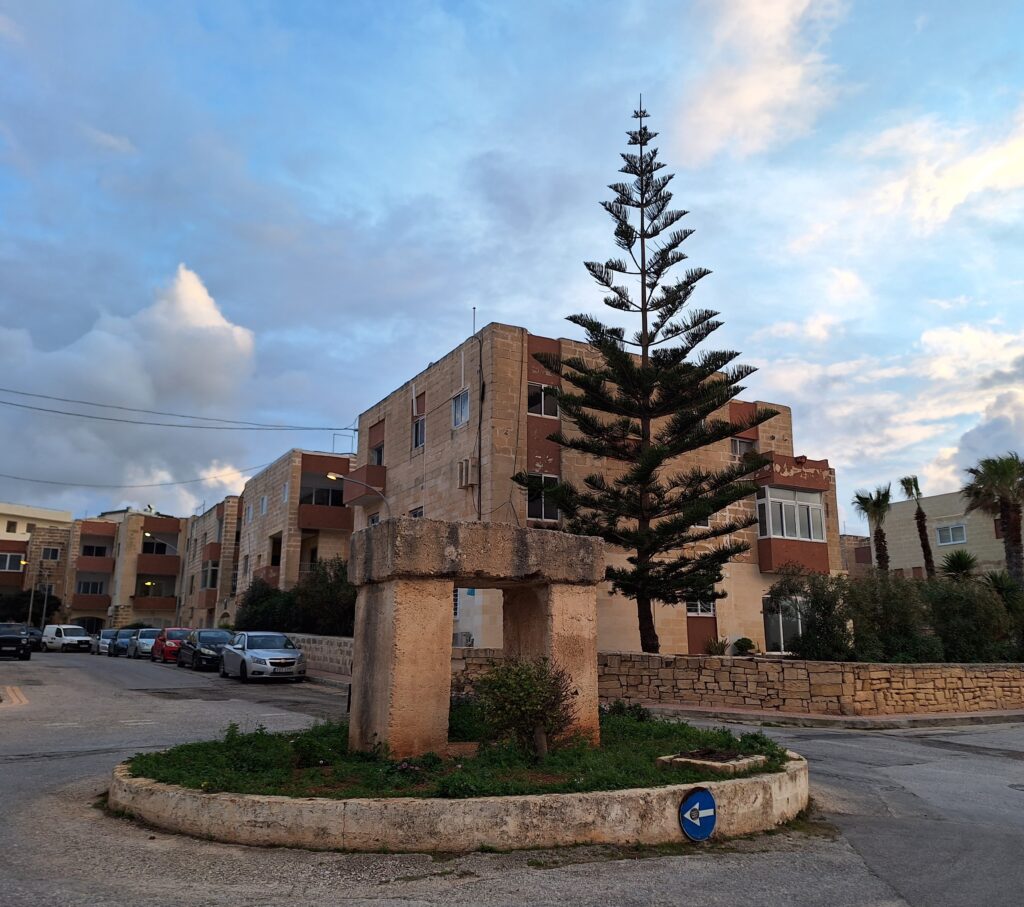
So where was this dolmen in Saint Paul’s Bay situated? We wanted to see it! It turned out that the Dolmen that Dolmen Hotel is named after is located in the hotel’s garden. And the hotel was closed due to renovations, so we couldn’t get in to see. Big disappointment! The closest we got was this new dolmen – made by concrete – in a roundabout two blocks from the apartment. The Buġibba dolmen is from the Tarxian period, a prehistoric phase in Malta (3000-2500 BC), where a lot of temple building took place. However, the term ‘dolmen‘ comes from Gaelic and means ‘stone with a hole‘.
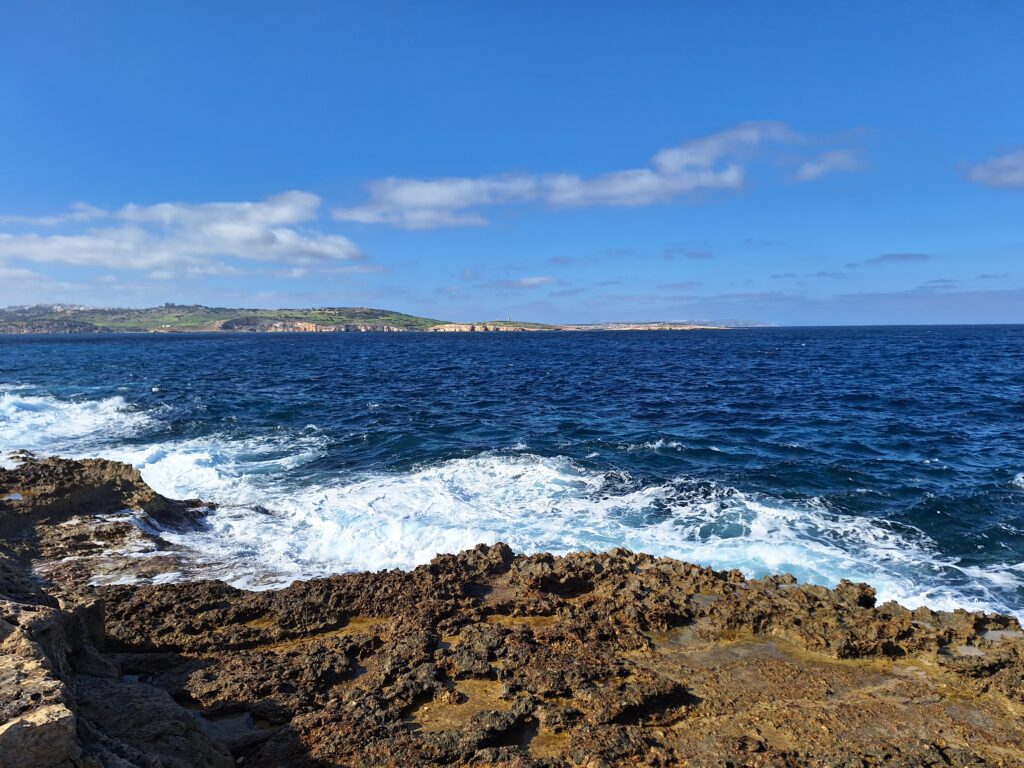
The house book in Buġibba suggested the rocky cliffs below the promenade as a bathing place, only a few minutes away from the apartment. It was not a good recommendation – in winter time! During 18 days there were no days with flat seas. And Saint Paul’s Bay is so wide that it is too harsch when the wind is blowing from the west. But a short distance into the fjord we found a small bay with calm water, and we got to bathe from the rocks in Buġibba at least once. And at the same time could follow the doctor’s advice of walking in uneven terrain.
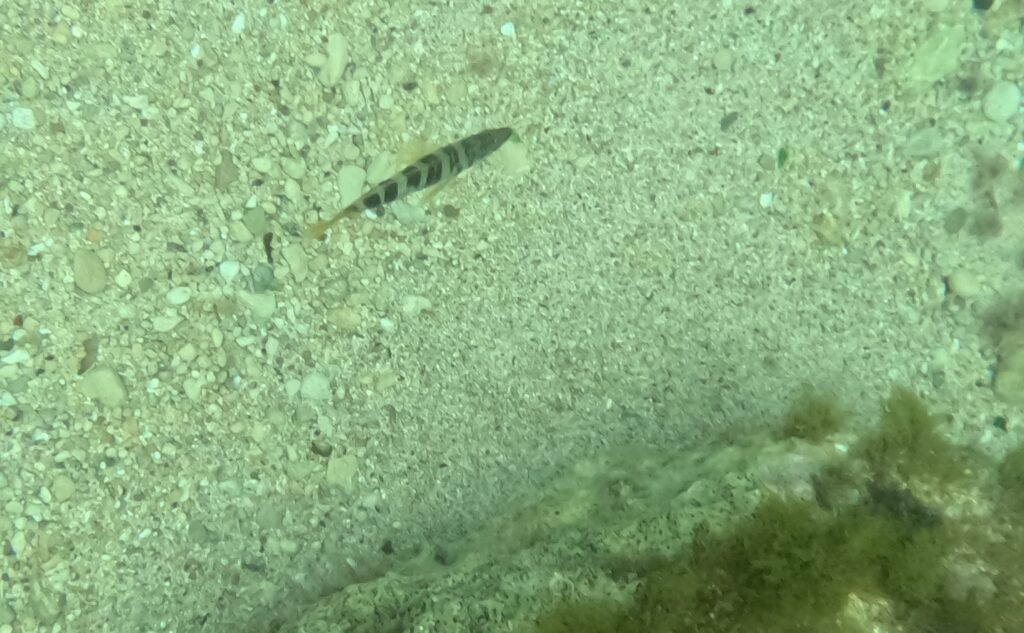
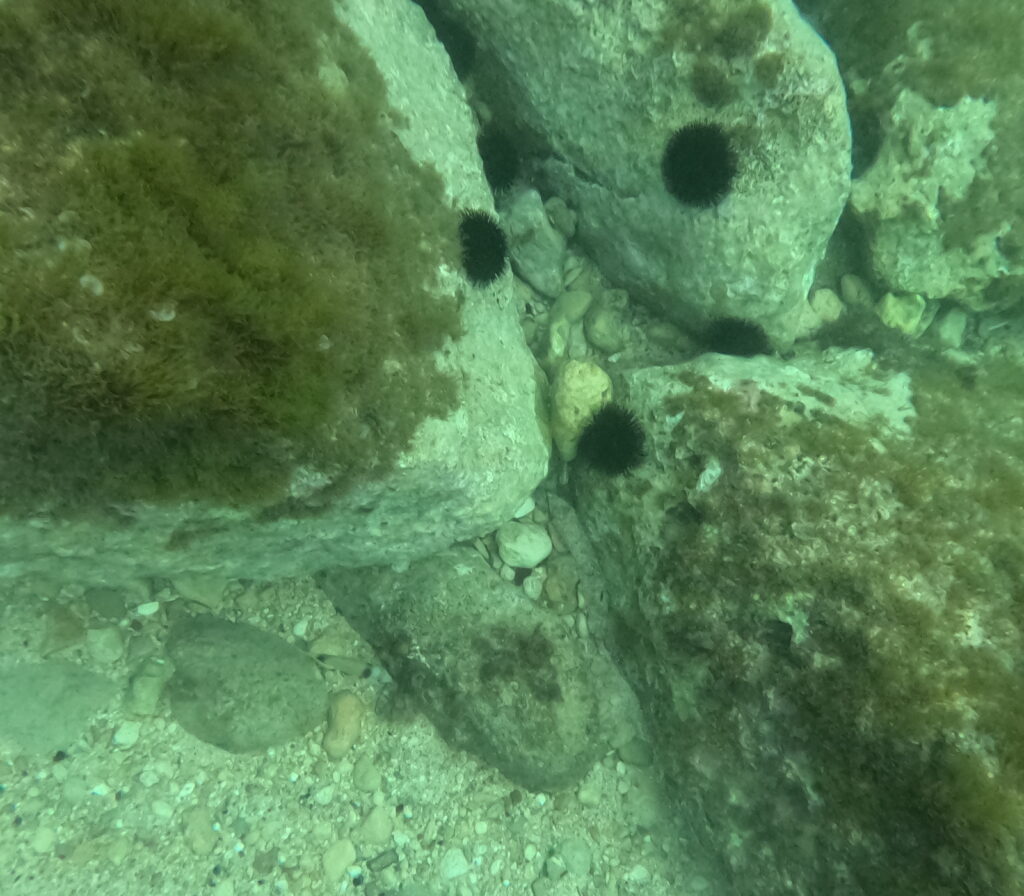
It was quite OK to swim in Buġibba, but generally speaking, this is probably not the best bathing spot during wintertime.
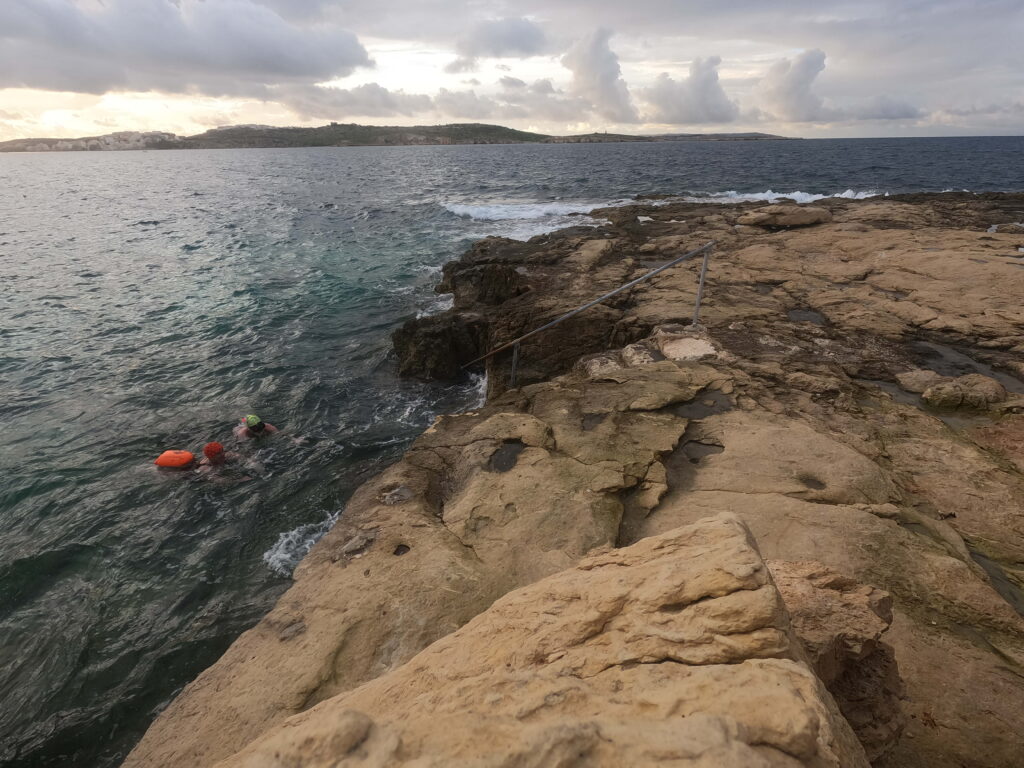
Ref:
Rix, Juliet: ‘Malta and Gozo‘, Bradt Travel Guides Ltd, 2019,
ISBN 978 1 78477 070 9